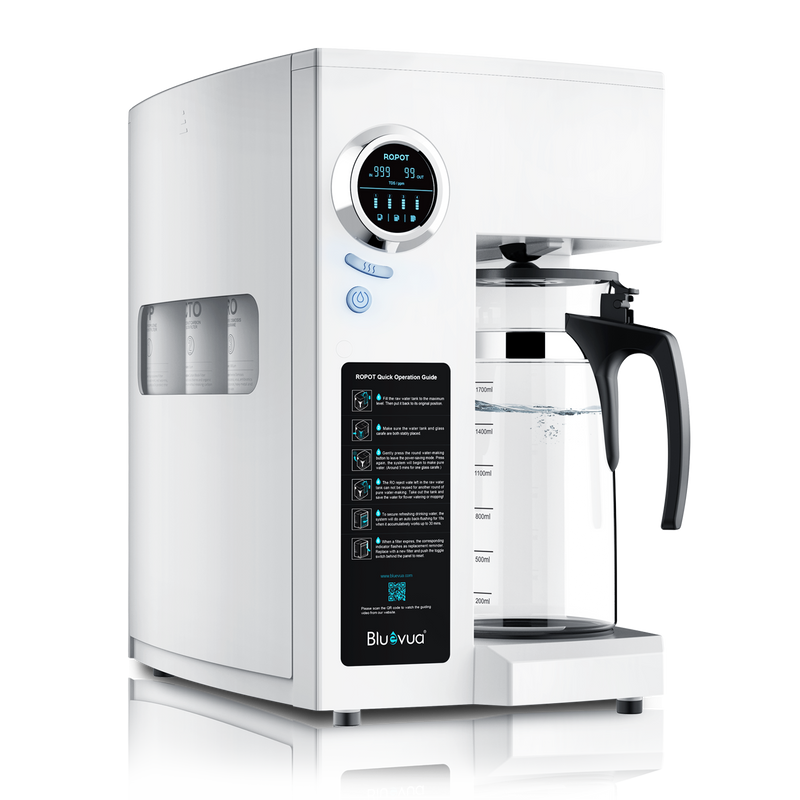Unlock the Secrets of Countertop Reverse Osmosis: Transform Your Water Today!
In today’s world, where clean drinking water is essential for good health, countertop reverse osmosis (RO) systems are gaining immense popularity among homeowners. These compact filtration systems have become a go-to solution for those seeking to purify their tap water effectively. With increasing concerns about contaminants in municipal water supplies, investing in a countertop RO system can offer peace of mind by ensuring that the water you and your family consume is free from harmful impurities. This article aims to educate readers on how countertop RO systems work, their benefits, and what to consider when choosing the right one for your home.

Understanding Reverse Osmosis
Reverse osmosis is a water purification technology that utilizes a semipermeable membrane to remove ions, molecules, and larger particles from drinking water. The process begins by applying pressure to the water, forcing it through this membrane that only allows water molecules to pass while blocking contaminants such as bacteria, viruses, and dissolved salts. This remarkable process not only removes impurities but also enhances the overall quality and taste of the water. Friends of mine who have installed such systems rave about the crisp and refreshing taste of the water compared to what they previously drank. This simple yet effective method has become an essential technique for achieving pure drinking water.
What is a Countertop Reverse Osmosis System?
A countertop reverse osmosis system is a compact, user-friendly water filtration device designed to sit on your kitchen countertop. Unlike under-sink systems that require complex installation and plumbing modifications, countertop RO systems are portable and easy to set up, making them ideal for renters or those who prefer a temporary solution. These systems typically consist of several stages of filtration, including pre-filters, the RO membrane, and post-filters, ensuring thorough purification. Their sleek design allows them to fit seamlessly into any kitchen decor, making them not only functional but also aesthetically pleasing. Overall, countertop RO systems provide a convenient option for those looking to improve their drinking water quality without the hassle of permanent installation.
Benefits of Using Countertop RO Systems
There are numerous advantages to using countertop reverse osmosis systems for water purification. Firstly, their space-saving design is perfect for kitchens with limited counter space and provides an affordable option compared to larger filtration systems. Secondly, the quality of water produced is exceptional; countertop RO systems effectively remove contaminants, providing you with clean, great-tasting water. Additionally, these systems can significantly contribute to better health by reducing exposure to harmful substances commonly found in tap water. Environmentally, using these systems can lead to a decrease in single-use plastic bottles, as you can fill your own reusable bottles with purified water. A friend who made the switch reported feeling healthier and more hydrated, emphasizing the positive impact of quality water on overall well-being.
How to Choose the Right Countertop RO System
When selecting the right countertop reverse osmosis system for your needs, there are several key factors to consider. First, evaluate the filtration capacity; choose a system that can meet your household's daily water consumption. Maintenance is another critical factor; ensure that the system has easily replaceable filters and a straightforward cleaning process. User reviews can also provide valuable insights into the performance and reliability of different models. It’s essential to assess your personal preferences, such as size, design, and budget, to find the system that fits seamlessly into your lifestyle. Consulting with friends who have experience with these systems can also guide you in making an informed decision, as their insights can help you avoid common pitfalls.
Enhancing Water Quality with Countertop RO Systems
In conclusion, countertop reverse osmosis systems offer an effective and convenient solution for purifying drinking water, making them an excellent addition to any home. With their ability to remove contaminants and improve water quality, these systems not only enhance the taste of your water but also contribute to better health and environmental sustainability. As you consider your options, remember the key points discussed here and take action towards transforming your water for a healthier lifestyle. Your body deserves the best, and investing in a countertop RO system could be the first step toward achieving that goal.








